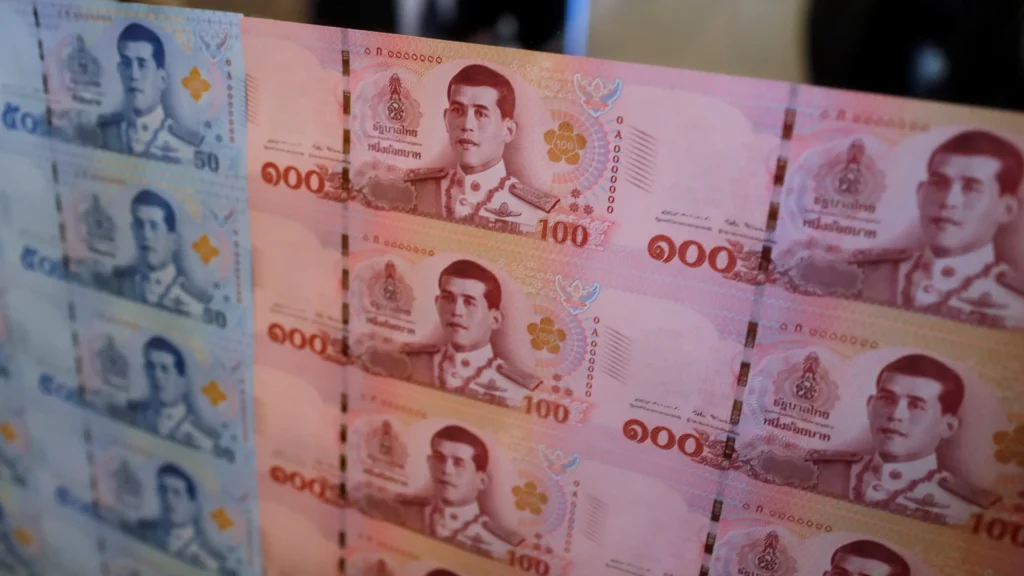Stablecoins in Thailand 2025: What Thai Investors Are Really Asking
Frequently Asked Questions About Stablecoins in Thailand (2025 Edition)
In 2025, more Thai investors are asking one simple question: Should I be using stablecoin Thailand 2025? As the crypto landscape matures and the Thai baht faces mounting pressure, digital assets like USDT and USDC are becoming more than just speculative tools—they’re turning into practical alternatives for saving, transacting, and hedging. Whether you’re a freelancer earning in dollars or a cautious investor exploring ways to avoid currency volatility, stablecoins are firmly on the radar. This FAQ breaks down the real questions Thai users are asking right now—about legality, safety, returns, and what this shift really means for the future of finance in Thailand.

Credit from : Rock’n’Block
1. Why are Thai investors suddenly interested in stablecoin Thailand 2025 like USDT and USDC?
Because stablecoins offer something the Thai baht currently struggles with: stability and dollar exposure. After years of inflation concerns and a sluggish post-pandemic economy, many Thai investors are looking for assets that preserve value. Stablecoins—especially USDT and USDC—act as digital versions of the U.S. dollar, offering a relatively safe place to store funds without the volatility of other cryptocurrencies.

2. Are stablecoin Thailand 2025 just a passing trend?
Unlikely. What began as a niche move among tech-savvy investors has now spread to freelancers, retirees, and even small business owners. With easier access, more trading pairs on local exchanges, and rising global usage, stablecoins are becoming a long-term tool for Thai investors—not a temporary fad.
3. What’s the real difference between USDT and USDC?
Both aim to maintain a 1:1 value with the U.S. dollar, but they differ in how they’re managed:
- USDT (Tether) is the most widely used stablecoin globally and has deeper liquidity on Thai exchanges like Bitkub and Satang.
- USDC (USD Coin) is seen as more transparent, with frequent audits and stronger U.S. regulatory alignment.
For active traders in Thailand, USDT is often the more accessible choice. For those who care more about regulation and accountability, USDC tends to be the safer bet.

4. Are stablecoins legal to use in Thailand?
Yes, but with limitations. Thai regulators, especially the Securities and Exchange Commission (SEC), allow licensed platforms to list and support stablecoin trading. However, using them for everyday transactions—like buying coffee or paying for services—is still under regulatory watch. The government wants to protect the Thai baht’s dominance, so payment use cases remain restricted.
5. Are there real risks in using stablecoins?
Yes, and investors should stay informed. The collapse of Terra (UST) in 2022 showed that not all stablecoins are equal. While USDT and USDC have improved their backing and transparency since then, they’re not risk-free. Issues like liquidity problems, regulatory changes, or depegging events can still occur. Always use reputable platforms and understand what you’re holding.
6. What makes stablecoins more convenient than traditional banking or forex?
Stablecoins offer speed and accessibility that banks can’t match. There are no wire delays, no banking hours, and often lower fees. A Thai freelancer can get paid in USDC, skip costly currency conversion, and access their funds instantly. Investors can also move stablecoins into DeFi protocols to earn passive returns—often higher than traditional Thai savings accounts.

7. Can I earn passive income with stablecoins?
Yes. Many DeFi platforms still offer 3–6% annual yields on stablecoins like USDC and USDT. Though yields have dropped since the peak of DeFi mania, they remain attractive—especially in contrast to local interest rates. Just note: these returns come with smart contract and platform risk, so research is essential.

8. Which Thai exchanges support stablecoins?
Most major local platforms now support both USDT and USDC. Exchanges like Bitkub, Satang Pro, and Zipmex offer THB pairs for USDT and sometimes USDC. Liquidity and fees may vary, so it’s worth comparing before choosing a platform.
9. Is this shift toward stablecoins changing Thailand’s financial behavior?
In some ways, yes. The growing use of stablecoins reflects broader dissatisfaction with traditional financial systems. Younger Thais, especially, appreciate the control and autonomy of holding digital assets. The shift isn’t just technical—it’s cultural.
10. Final Thought: Should I use stablecoins in 2025 Thailand?
If you’re looking to protect savings, hedge against currency swings, or explore crypto without wild volatility, stablecoins are worth a serious look. But treat them like any investment: with due diligence, not blind faith.




